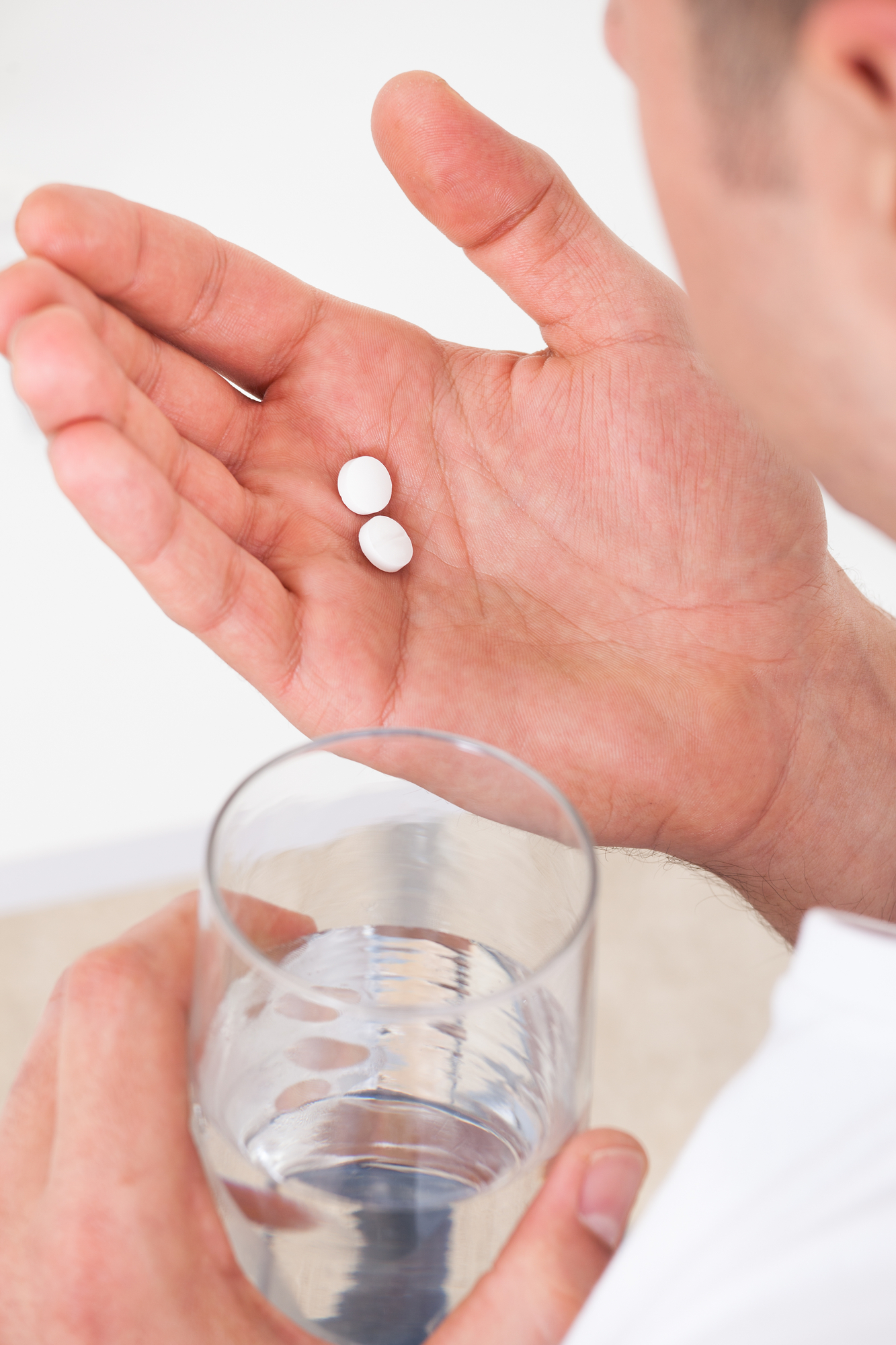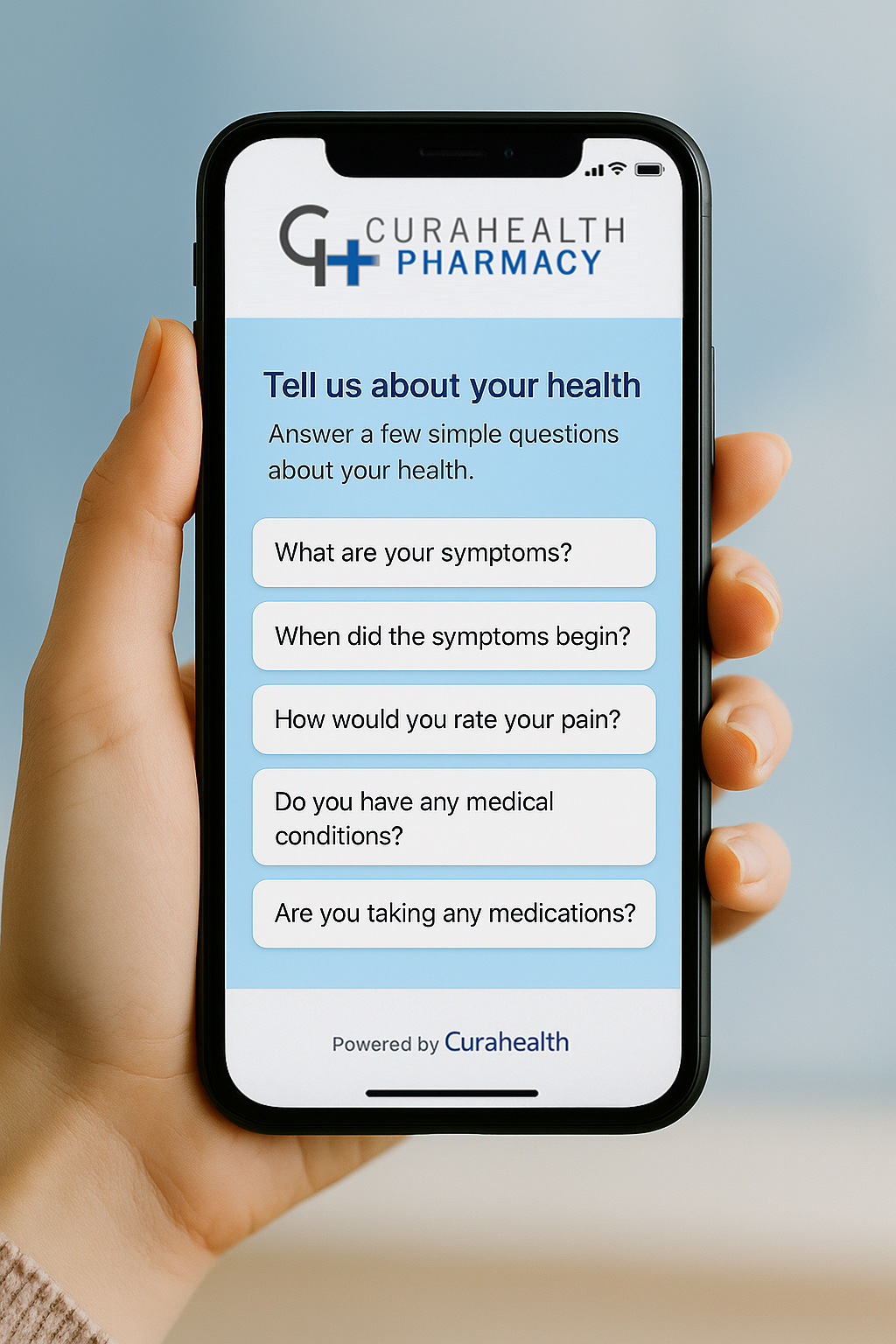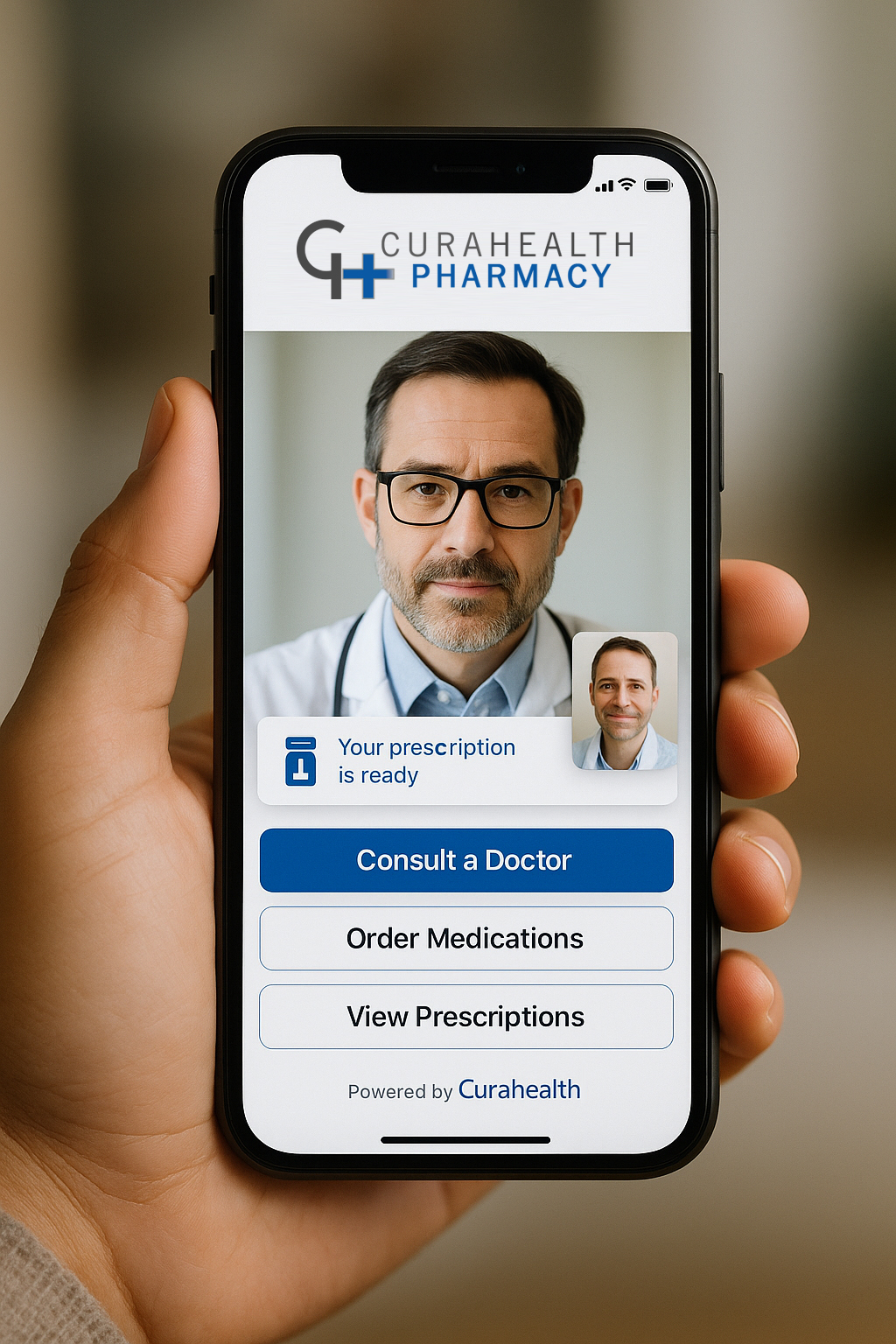Curahealth pharmacy platform
- Experienced U.S. licensed healthcare providers
- No subscriptions or hidden fees
- Low-Cost antibiotics, prescribed online
- FDA-approved prescription antibiotics
- Fast delivery in a discreet package








Antibiotics treat bacterial infections, not viruses like the flu or common cold. They should only be used when prescribed by a doctor to avoid resistance. Misuse or overuse can make bacteria stronger and harder to kill. Always complete the full course, even if you start feeling better before it’s done.
Get antibiotics online with a free consultation by licensed U.S. physicians. We offer quick, private shipping and FDA-approved treatments at competitive prices.



Tell Us About Your Health
No need for an office visit. Just take two minutes to describe your symptoms and medical history online — anytime, from anywhere.
Reviewed by a Doctor
Our licensed provider will assess your info and recommend the right treatment. You can connect with them by message, phone, or video.
Get Your Medication
If a prescription is approved, your medication will be shipped quickly to your door in discreet packaging to protect your privacy.
Antibiotics were discovered in the middle of the XX century and became the turning point in medicine. They allow the treatment of various infectious diseases. Learn more about their usage.
Antibiotics are widely utilized in modern medicine and doctors prescribe them every day. However, they were developed only in the middle of the XX century and by chance. Before this invention, infectious diseases posed a great danger and took many lives.
Nowadays we benefit from efficient antibiotics but still face the problem of resistance to them. To prevent it, it’s important to understand more about these medicines and the rules of their intake.
Antibiotics suppress the vital activity of bacteria, prevent their reproduction and are utilized to treat various illnesses caused by bacterial infections.
The first established antibiotic was penicillin and nowadays we have the following groups:
They differ in chemical structure and mechanism of action. Still, the main idea stays the same – to kill harmful bacteria without adverse effects on the human body. Here we should mention that lots of bacteria live inside our bodies and on our skin and do not pose any danger.
Only those that we call pathogens have the ability to provoke diseases.
The most common prescriptions for antibiotics look as follows:
All antibiotics help only in the cure of illnesses caused by bacteria. Viral diseases like flu, herpes or COVID-19 cannot be combated with their help. However, they are prescribed if the viral infection proceeds with complications and a bacterial infection starts.
Anyway, the prescription must be done by the doctor after thoughtful examination and analysis that prove the nature of the main pathogen.
This group has a wide spectrum of action and therefore is prescribed to treat infections of:
Still, bacteria often develop resistance to penicillin and its derivatives as they have been utilized for the longest period. Thus, the doctor should follow the course of the treatment.
As for possible side effects from this group, they include:
Amoxicillin belongs to this group and is often combined with clavulanic acid to avoid resistance. Like all penicillines, it possesses a wide spectrum of action.
The medicine is taken before meals for quicker absorption and faster action. The withdrawal period is nearly 6 hours. On average, the pills are prescribed three times a day for 5 days.
As for the dosage forms, there are suspensions and tablets. Thus, it’s convenient for both adults and children. Amoxicillin can be used by children from 12 years and adults.
This group is closely related to penicillin and its derivatives but is considered more efficient.
There are four generations of cephalosporins that are used in the case of:
The medicines are associated with the following possible adverse effects:
Cephalosporinsare prohibited to take together with diuretics. This increases the possibility of toxic damage to the kidneys.
This antibiotic belongs to cephalosporins of the third generation. It hinders the cell wall synthesis of the bacteria and inhibits the growth of pathogenic cells. After the intake, the medicine reaches the affected area and starts to fight the infection.
On average, the treatment lasts from 3 to 14 days. Pillsare allowed to be taken by adults and children after 12 years.
These antibiotics stop the synthesis of proteins by the microbial cells. This stops their growth and reproduction.
Macrolides are quite versatile and are used in the case of the following infections:
The most common adverse effects include:
Macrolides are not taken simultaneously with ergotamine and dihydroergotamine due to the danger to health. If utilized together with oral contraceptives, the effectiveness decreases.
One of the most popular medicines of this group is azithromycin. Itis classified as macrolide-azalide and has a wide range of actions.
After taking a pill with a dosage of 500 mg, the maximum concentration of the active compound in the blood is observed after 2-3 hours.
This means, that the medicine starts to act quickly. Moreover, the complete removal from the bodyis observed after 35-50 hours. Therefore, the patient gets a long-term effect and there is no need to take the pills often. Thus, Azithromycin is prescribed once a day a few hours before meals.
As for the available dosage forms, there arepills for children from 3 years and suspensions for babies from 6 months.
Pregnant women, women who are breastfeeding and patients with kidney or liver failure, should take this antibiotic with caution and only under a doctor’s guidance.
Fluoroquinolones are synthetic medicines that also have four generations and versatile representatives that are able to cure even the most resistant infections.
The most common causes of their prescription include:
Possible side effects are as follows:
It is strictly prohibited to use this group of antibiotics during lactation, pregnancy and in the case of renal and hepatic failure.
The effect of fluoroquinolones decreases when they are used simultaneously with magnesium or aluminum containing antacids. Therefore, such medications should be taken separately.
This medicine belongs to the group of fluoroquinolones and possesses a wide range of action. It stops the reproduction of harmful bacteria.
All the substance from the taken pill reaches the site of infection and guarantees high efficiency. The elimination of the medicine from the body lasts more than 72 hours. This means that the pill has a long-lasting effect, but this also increases the probability of adverse effects, especially if the patient takes more medicine than needed.
Levofloxacin is prescribed 1-2 times per day between or before meals. Tablets or capsules should be washed down with a glass of fresh water.
The medicine is not used for the treatment of children and adolescents under the age of 18 due to the high risk of articular cartilage pathology.
As well as other antibiotics, tetracyclines prevent the development and growth of harmful bacteria. They block the synthesis of proteins that are needed for the life of bacterial cells. Thus, they cannot grow, live and reproduce and die.
Tetracyclines are selective and affect only bacterial cells without bringing harmful consequences to the tissues and organs of the human body. That is why they do not have severe side effects and combine efficiency with safety.
In clinical practice, tetracyclinesare utilized to cure the infections of:
In addition, they are used in stomatology, for preventing malaria and even treating rosacea. Therefore, they are quite versatile and the resistance to them appears rarely.
The medicine is available in pills of 100 or 200 mg and in liquid dosage forms for children. On average, doctors prescribe 200 mg of Doxycycline daily for the cure of infections and 100 mg for malaria prevention. Each dose can be taken as a one-time pill or divided in two.
The medicine should be taken with a glass of water between meals. Doxycycline should not be combined with dairy products and alcohol.
Such combinations reduce the efficiency and prevent a quick recovery of the patient. In addition, alcohol consumption often leads to more pronounced adverse effects.
While taking antibiotics, it is crucial to do this responsibly. Usually, the doctor gives you the algorithm and you should follow it strictly. In addition, the following pieces of advice are important:
If you follow all these recommendations, then the development of side effects will not occur. You’ll recover fast and without any complications.
Altogether, antibiotics are a quite versatile group of medicines. They are relatively young but have a rich history of development and utilization. Nowadays we have antibiotics for adults and children and in various dosage forms. These medicines save lives and help us to live longer and healthier lives.
Still, we have to be aware of the problem of resistance and do not neglect the rules of their usage. Of course, scientists will develop new active substances but this process is expensive and gradual. It is much easier to avoid this problem than to face and combat it. Responsible use of antibiotics is an easy thing to do to prevent resistance.